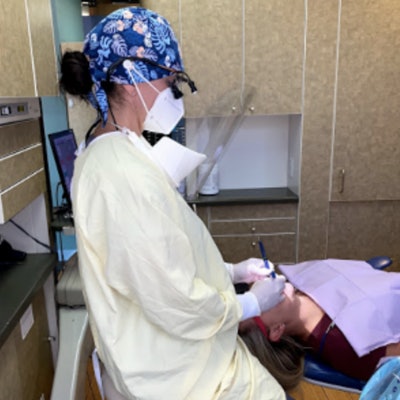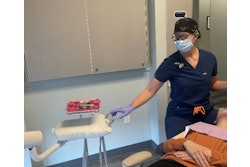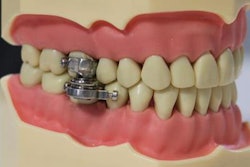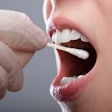
When thinking of dental ergonomic equipment, many different pieces come to mind: operator and patient chairs, loupes, instruments, handpieces, and operatory design to name a few. But there is one piece of equipment that is the most important of all, and it's free! Your mind.
 Stephanie Botts, RDH.
Stephanie Botts, RDH.Mindset is an essential component when it comes to practicing ergonomically and safely in the dental profession. Before we enter the operatory, we must put the health of our bodies first. After all, we only have this one body to last us our entire lifetime, and we need to keep it healthy and strong.
So before entering the operatory and focusing all your attention on your patient, decide first how you will care for your body while seeing your patient. Are you going to position the patient correctly depending on which arch or area is to be treated? Are you going to take a short 30-second stretch every 20 minutes to reduce fatigue and encourage blood flow to overworked muscles? Are you going to stay at 12 o'clock to promote a neutral posture?
Your thoughts may even extend beyond the operatory. For example, you may think, "How do I want to feel later today? Do I want to do an activity after work, or will I need to go home and rest my aching back?" These types of questions may aid you in adopting this new mindset of putting yourself first and taking the time to practice more ergonomically.
Ergonomics 101
Ergonomics is simply the science of fitting the workplace to the worker, not the other way around! With this mindset, we will establish our neutral posture and "safe zone" first, then adjust our workplace (everything else in the operatory besides ourselves) to accommodate our bodies.
Speaking of neutral posture, what is it, and what does it look like for a dental practitioner? Neutral posture is the position of the body when the musculoskeletal system is in balance, with no one muscle group working harder than another.
Evaluating for neutral posture is quickly done from the profile view, with the ear in line with the shoulder, which is then in line with the hip and the foot (if standing). Thus, one could draw a straight line from the ear to the shoulder, hip, and foot.
 Evaluate for neutral posture from the profile view. All images courtesy of Stephanie Botts.
Evaluate for neutral posture from the profile view. All images courtesy of Stephanie Botts.The shoulders should be rolled back and down to establish neutral posture, with the chin pushed back and the arms at the sides with elbows bent at 90° (if sitting). This is the safest position for the body both inside and outside of the operatory.
Clinicians should strive to establish and maintain neutral posture while practicing. It can be challenging due to the nature of practicing dentistry, but with some small ergonomic changes, it is possible. Clinicians can adjust their stool, the patient chair, the patient, and their equipment to support neutral posture and practicing safer.
Body awareness is crucial when establishing neutral posture and when actively practicing. Knowing what one's habits are and where the body is at certain times during the appointment will help the clinician to make changes and reestablish neutrality.
 Body awareness is crucial when actively practicing.
Body awareness is crucial when actively practicing.For many dental practitioners, it is a paradigm shift to think about themselves first. Most clinicians are caretakers and often put the needs of others before their own. But to provide the best care to others, clinicians must first care for themselves.
They cannot care for their patients while they are in pain or, worse, at home due to an injury or recovery from surgery. Adopting an ergonomic mindset is crucial if the clinician wants to have a long and healthy career and a great quality of life.
Stephanie Botts has been a full-time clinical dental hygienist for 13 years and is also a Certified Ergonomics Assessment Specialist, providing both in-office and virtual ergonomics consulting and coaching to dental professionals. Her experience as a hygienist and ergonomics expert has allowed her to recognize the unique challenges of practicing pain-free in the dental setting.
Stephanie can be contacted by email at [email protected], through her website at PosturePros.net, or by phone at 907-229-4989.
The comments and observations expressed herein do not necessarily reflect the opinions of DrBicuspid.com, nor should they be construed as an endorsement or admonishment of any particular idea, vendor, or organization.



















